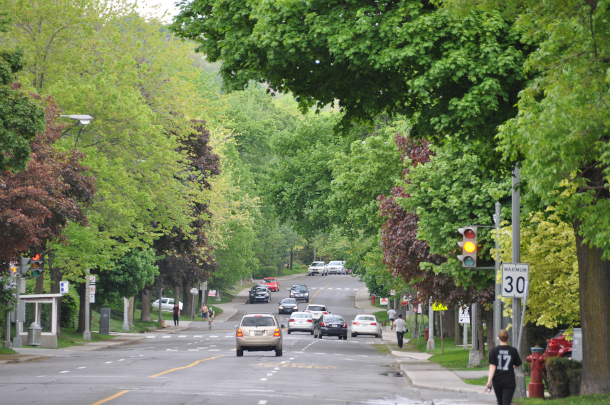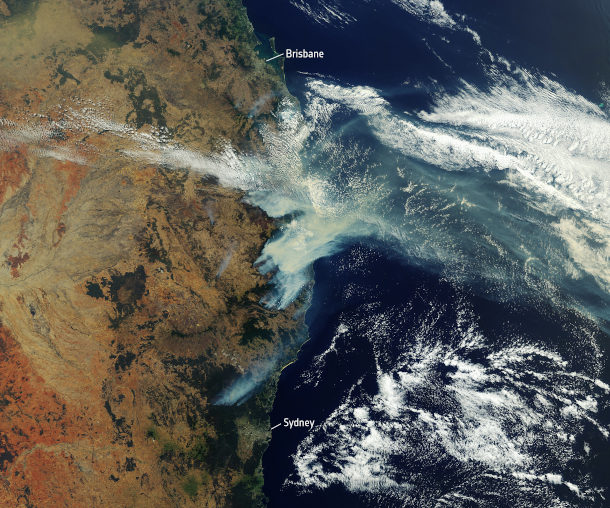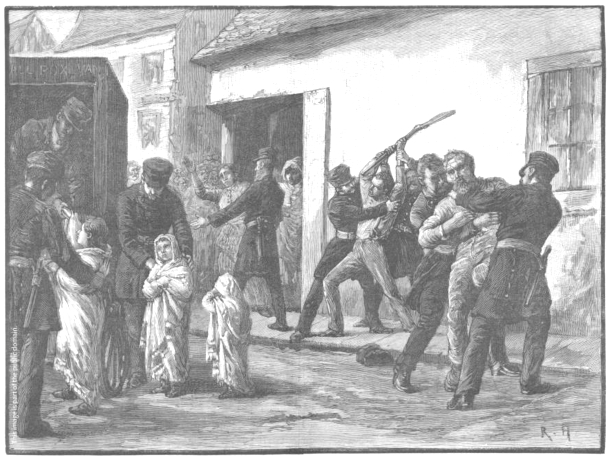Beyond the Headlines
Air Date: Week of September 24, 2021

A tree-lined street in Westmount, an upscale neighborhood in Montréal, Québec. (Photo: abdallahh, Flickr, CC BY 2.0)
This week, Environmental Health News Editor Peter Dykstra fills in Host Steve Curwood on the link between household income and tree cover. Also, how wildfires in Australia led to a giant algal bloom thousands of miles away in the Pacific Ocean. In the history calendar, they look back to the Montréal Vaccine Riot of 1885, when antivaccine sentiment turned violent in the face of a smallpox epidemic.
Transcript
CURWOOD: It's time now for us to take a look beyond the headlines with Peter Dykstra. Peter's an editor with Environmental Health News, that's EHN dot org, and Dailyclimate.org. He's on the line now from Atlanta, Georgia. Hi there, Peter, what you got for us today?
DYKSTRA: Hi, Steve. As we all know, from that old saying, "money doesn't grow on trees." But in many cities, according to an analysis by CBC, Canadian Broadcasting, trees tend to grow near money. Several Montreal 'hoods with median household incomes of 100,000 Canadian dollars or more, with tree cover more than double some of the less affluent neighborhoods in that beautiful city. Other Canadian cities including Toronto and Quebec City showed the same thing.
CURWOOD: Well, and this puts real numbers on something that a lot of us suspect, that leafier neighborhoods tend to be richer. I'm thinking of places like Buckhead in your town, Atlanta, or Central Park in New York City, where the prices are much higher closer to the park.
DYKSTRA: Trees raise the rent and the real estate.
CURWOOD: There you go.
DYKSTRA: You know, my next item has a lot to do with trees as well, specifically burning trees in Australia, where they had record wildfires two years ago in 2019. Those wildfires, according to a study published in the journal Nature, caused an algae bloom 2000 miles across, as big as Australia itself, but more than 2000 miles offshore from the closest land point and the closest wildfire in Australia.

A satellite view of wildfire smoke from New South Wales and Queensland in Australia drifting out over the Pacific Ocean, November 2019. (Photo: Contains modified Copernicus Sentinel data (2019), processed by ESA, CC BY-SA 3.0 IGO)
CURWOOD: So usually you get algal blooms, when you get runoff from farms, too much fertilizer or certain factories, but obviously 2000 miles at sea, allowed them to point to the wildfires. And what was the mechanism?
DYKSTRA: Wildfire smoke contains all sorts of bad things other than just smoke getting in your lungs. One of those bad things is significant amounts of iron. And iron, of course, is a fertilizer that can help things grow in the ocean. The iron was carried away in wildfire smoke, it dumped in the ocean. It created this immense algae bloom all over the Southern Pacific. And it's a case of one environmental disaster causing a second one.
CURWOOD: It makes me wonder if we're going to see algal blooms in the eastern part of the United States after all these Western fires this year, or off the East coast.
DYKSTRA: That's right.
CURWOOD: Well, let's take a look now back in history and tell me what you want to talk about today.
DYKSTRA: Got another item from the beautiful city of Montreal. This was on September 28th, and there was a riot and a protest in Montreal, where French-speaking citizens viewed the imposition of a mandatory vaccination program as oppression by an English-speaking federal government. The thing is, the year was 1885 for this anti-vax protest, and the vaccination was to help eradicate smallpox.
CURWOOD: Why was there such protest about the vaccination then?

A drawing by Robert Harris titled “Incident of the smallpox epidemic, Montréal” shows sanitary police removing patients from the public through the use of force, around the time of the antivaccination riots of 1885. (Photo: Robert Harris, public domain)
DYKSTRA: Well, they stoned government offices, a home of a public health official in Montreal was torched. All because of fear of vaccines, not in the 21st century, but in the 19th century, when smallpox was the alleged means of repression.
CURWOOD: So that means that today's political pushback against vaccination is nothing new in human history, huh?
DYKSTRA: Nothing new at all. We keep thinking we invent new things. Instead, in cases like these, we're simply repeating the mistakes of past history.
CURWOOD: Well, thanks, Peter! Peter Dykstra is an editor with Environmental Health News, that's ehn.org, and dailyclimate.org. We'll talk again real soon.
DYKSTRA: All right, Steve. Thanks a lot, and I'll talk to you soon.
CURWOOD: And there's more on these stories on the Living on Earth web page. That's loe.org.
Links
CBC | “In Cities, Money Doesn’t Grow On Trees, But Trees Grow Near Money”
Vox | “Wildfires In Australia Caused An Explosion Of Sea Life Thousands Of Miles Away”
Living on Earth wants to hear from you!
Living on Earth
62 Calef Highway, Suite 212
Lee, NH 03861
Telephone: 617-287-4121
E-mail: comments@loe.org
Newsletter [Click here]
Donate to Living on Earth!
Living on Earth is an independent media program and relies entirely on contributions from listeners and institutions supporting public service. Please donate now to preserve an independent environmental voice.
NewsletterLiving on Earth offers a weekly delivery of the show's rundown to your mailbox. Sign up for our newsletter today!
 Sailors For The Sea: Be the change you want to sea.
Sailors For The Sea: Be the change you want to sea.
 The Grantham Foundation for the Protection of the Environment: Committed to protecting and improving the health of the global environment.
The Grantham Foundation for the Protection of the Environment: Committed to protecting and improving the health of the global environment.
 Contribute to Living on Earth and receive, as our gift to you, an archival print of one of Mark Seth Lender's extraordinary wildlife photographs. Follow the link to see Mark's current collection of photographs.
Contribute to Living on Earth and receive, as our gift to you, an archival print of one of Mark Seth Lender's extraordinary wildlife photographs. Follow the link to see Mark's current collection of photographs.
 Buy a signed copy of Mark Seth Lender's book Smeagull the Seagull & support Living on Earth
Buy a signed copy of Mark Seth Lender's book Smeagull the Seagull & support Living on Earth

